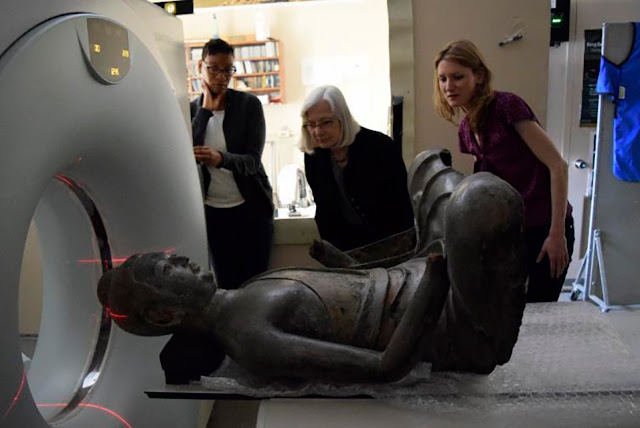The only existing sixth- and seventh-century Chinese lacquer Buddha sculptures have come together for the first time in an exhibition at the Smithsonian’s Arthur M. Sackler Gallery. “Secrets of the Lacquer Buddha” is on view Dec. 9–June 10, 2018.
 |
| Buddha, China, Tang dynasty (618–907), early 7th century; hollow-core lacquer with pigment and gilding [Credit: Freer|Sackler] |
Highlighting the impact science has on understanding art, “Secrets of the Lacquer Buddha” identifies the materials used in the creation of these centuries-old sculptures. The complex and time-consuming process began with a core made of wood or clay covered with cloth strips wet with lacquer and thickened with materials such as oils, blood and burnt bone.
 |
| Computed tomography scanning of the Freer Gallery of Art's lacquer buddha at the National Museum of Natural History [Credit: Freer|Sackler] |
“We thought that such sculptures were expensive and fragile; through scientific analysis, we have confirmed this,” said Donna Strahan, the Freer|Sackler’s head of conservation and scientific research. “We found the methods used to make them were much more complicated than those used to create utilitarian lacquer objects.”
The Freer|Sackler’s Department of Conservation and Scientific Research used specialized equipment and new methods to analyze the sculptures, exposing microscopic details. X-radiography and computerized tomography scans explored details hidden to the human eye. X-ray fluorescence analysis analyzed the eyes, and the scanning electron microscope was used to study bone particles mixed into the lacquer. Newly developed methods were used to study unusual organic materials in the lacquer layers. With each method, insights were gained that open up a new understanding of the lacquer process used in sixth- and seventh-century China. This technology allows visitors to peer into the science behind the art of ancient lacquer.
Source: The Freer|Sackler [December 08, 2017]
